Lenco Pro Control, effective and affordable trim and roll control
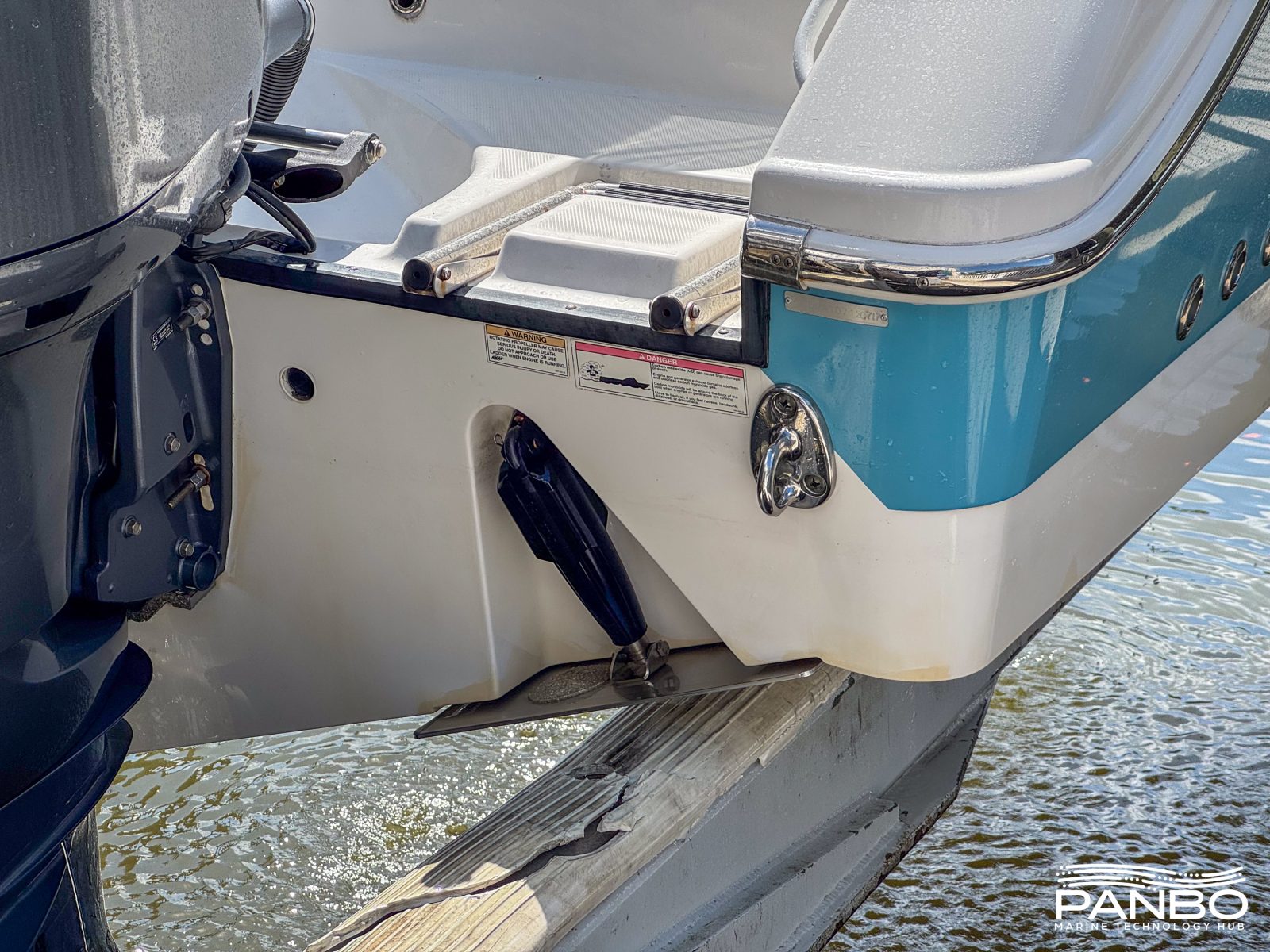
What do you call a system that mounts on the stern of your (generally planing) boat hull that influences how the boat rides through the water? For decades, a default answer of trim tabs described just about all such systems. But not any more. Now, we have systems with traditional tabs, vertical intercepters, and at least one system that fits none of our definitions. One company calls their system a vessel attitude control system or VACS for short. Hmm, maybe that’s what we should call these systems? Wait, no, that won’t work, they’ve trade marked it. So, what are we going to call them? My current best option is pitch and roll control devices or PARCD for short. It’s a mouthful, but at least it describes the function of these systems. So, with that out of the way, let’s take a look at Lenco’s Pro Control.
Pro Control is the first traditional trim tab system I’ve tested that works to actively control both pitch and roll. My previous experience has been with Zip Wake’s vertical interceptors and Seakeeper Ride’s rotary controllers. Both of those systems offer several advantages over trim tabs as we know them. But, depending on the hull configuration, they also may require modifications to the transom or not be compatible at all. For retrofit applications, Pro Control aims to use existing tabs both reducing the need for hull modifications and the expense of acquiring and installing new tabs.
I was part of the judging panel that awarded Lenco with an Innovation Award at IBEX 2024. Pro Control’s promise is fundamentally to deliver the performance interceptors and controllers deliver with traditional trim tab planes. That performance is delivered at a price much closer to traditional tabs. Price comparisons can be a little bit difficult since all systems come in multiple sizes and installation expense is a major differentiators. But, those difficulties aside, Pro Control will likely come in at half or less the cost of other trim and roll control systems.
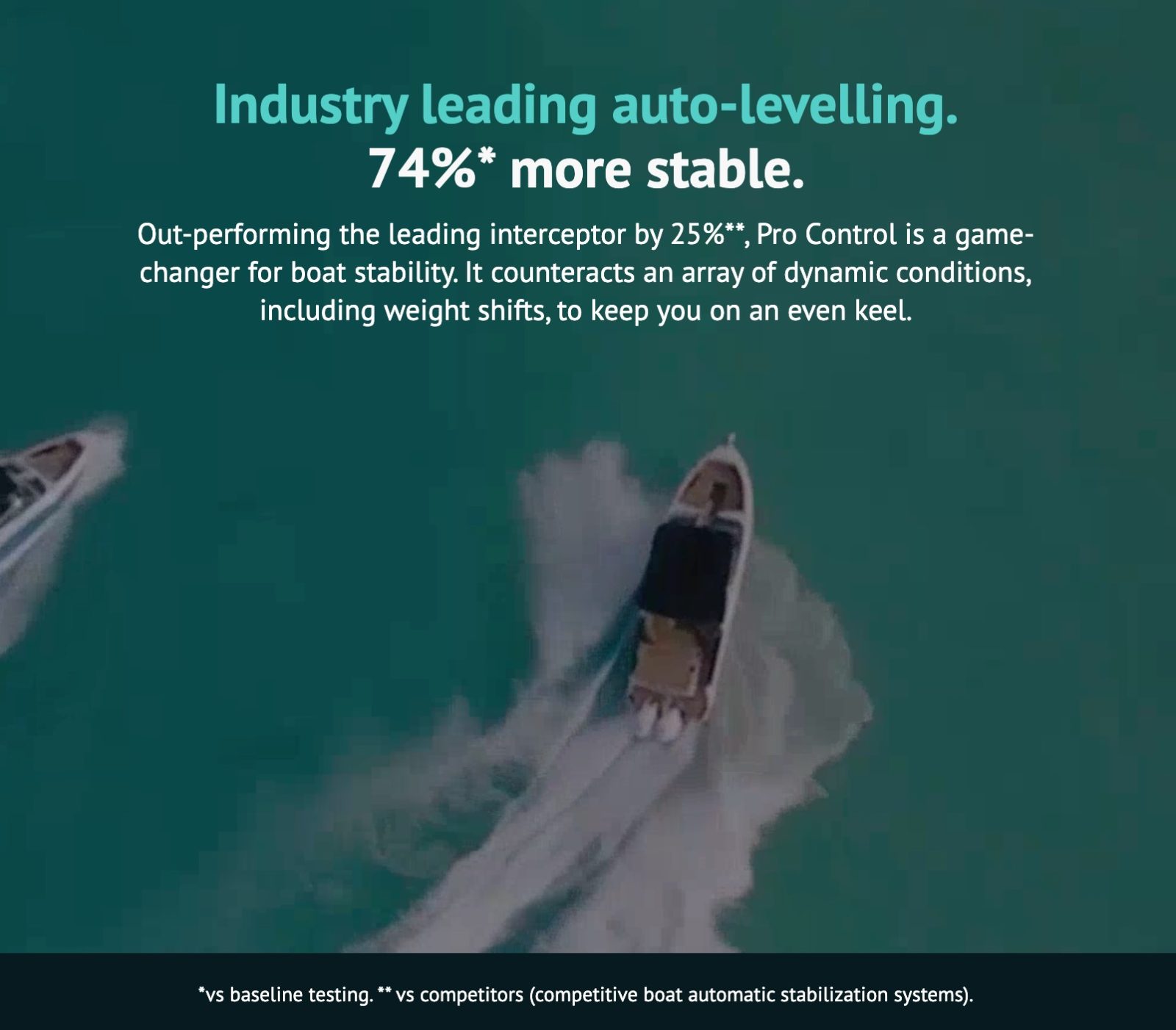
Lenco makes some pretty bold claims about Pro Control’s performance. In fact, they claim their system improves a vessel’s roll by 74 percent compared to just the hull. However, more boldly, they claim their system outperforms the leading interceptor system by 25 percent. I have it on good authority that “leading” system is Seakeeper Ride. The Pro Control product page makes quite a few additional claims about the system’s performance, but I didn’t notice any other claims about performance versus a competitor. Frankly, I’m a little skeptical about those claims and I’ve asked for the data to back them up. To date, I haven’t been able to obtain that data.
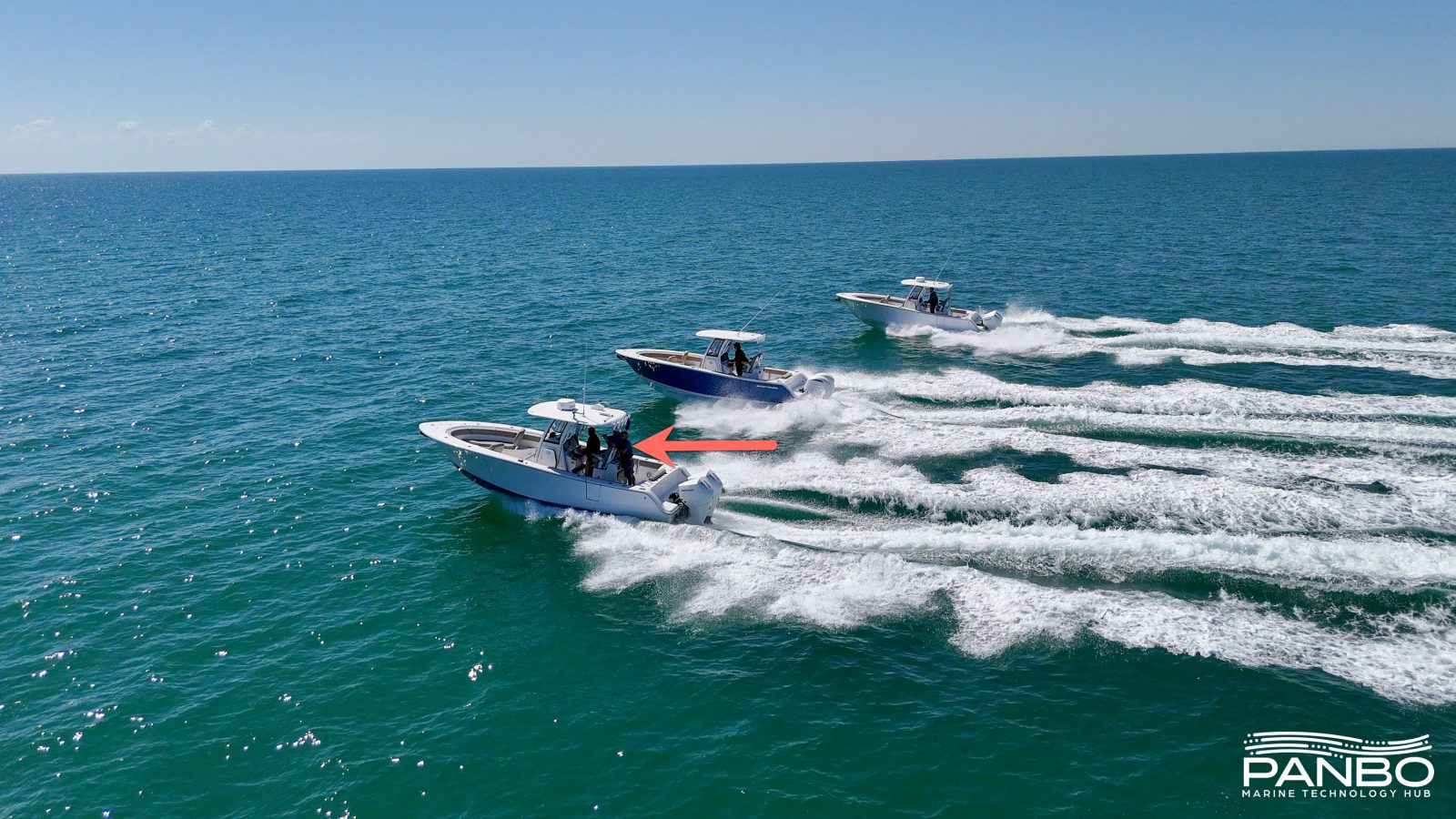
Speaking of comparing the systems, I’ve worked with both Seakeeper and Lenco on head to head testing of their systems. I have most of the data in hand for on the water testing comparisons of Lenco Pro Control, Seakeeper Ride, and Zipwake’s E-series interceptors. I’ll publish those results and my thoughts about all three systems in the near future. Although I’m going to focus this entry on Pro Control, I will share a brief comparison of the systems at the end.
Installation
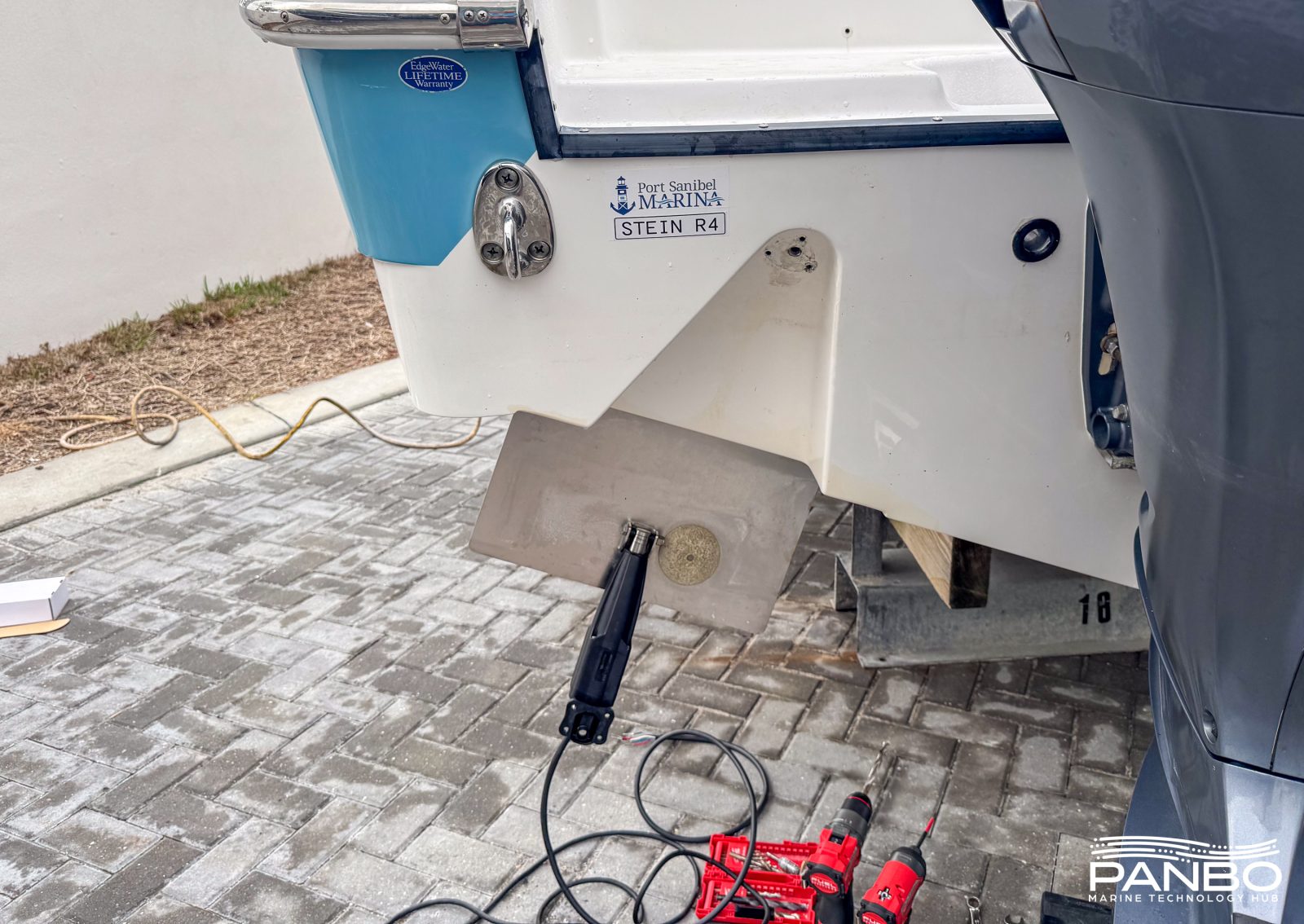
Panboat, a 2017 Edgewater 280CX came standard from the factory with Lenco’s standard electric tabs and manual controller. The good news for this upgrade is that the tabs themselves could be reused so the installation would consist of replacing the helm mounted controller, transom mounted actuators, the wiring in between, and adding an inertial measuring unit (IMU).

The existing actuators used a two wire connection scheme to provide power to the actuator. All movements were controlled based on time and polarity of the power applied to the actuator. The Pro Control actuators include a CANBus connection to a private Lenco CAN in addition to the power cabling. The additional communications between the actuator and control unit provide higher precision and greater certainty over the actuator’s position.
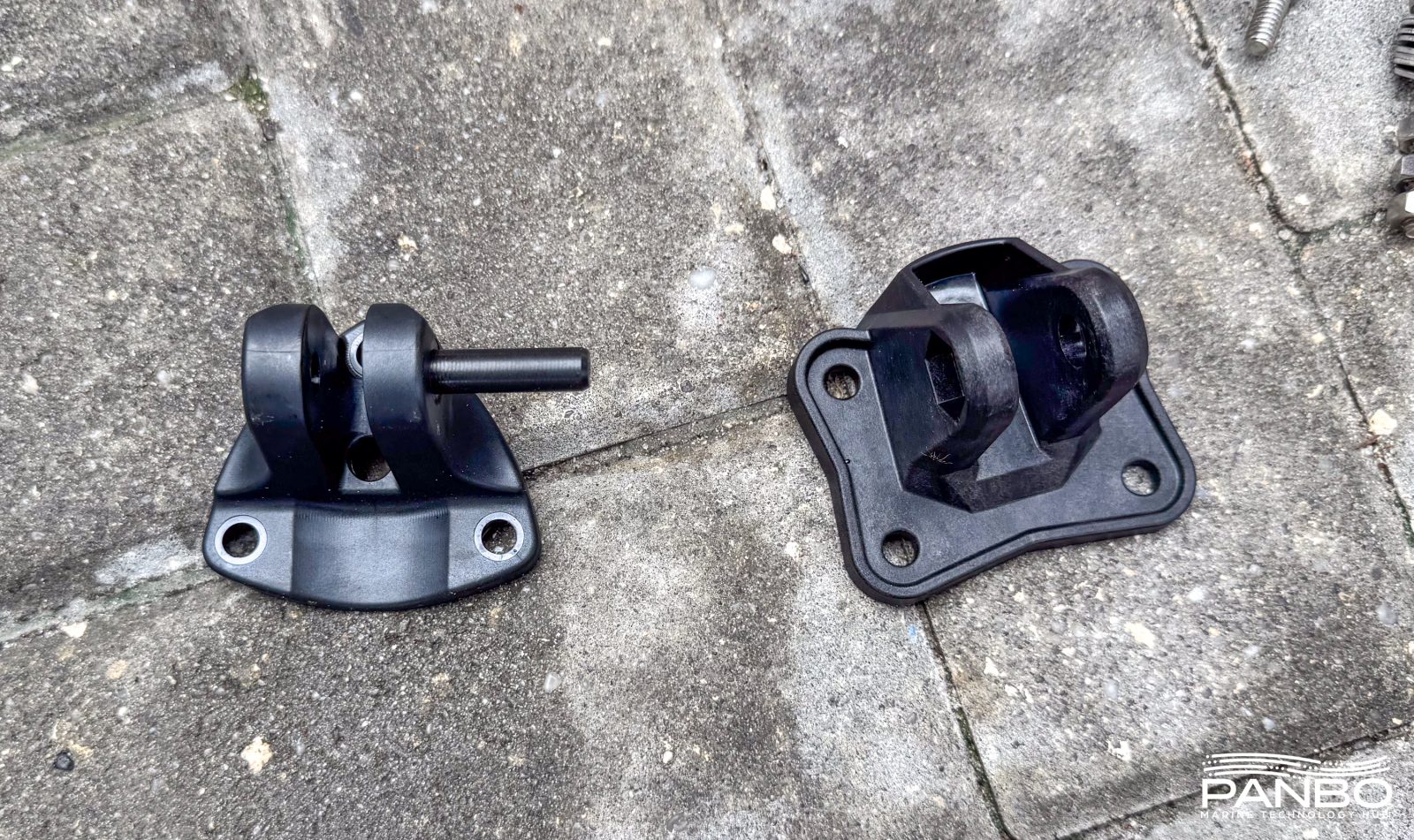
Lenco designed their new actuators to use the same bolt pattern at the trim tab so you can simply unbolt an old actuator and connect a new one. At the transom side of the actuator, they moved from three to four screws securing the bracket. The old bracket can be seen on the left above with the new one to its right. The two lower holes align on the two brackets. Additionally, the old top hole is used to pass the cable through the transom, though it may need to be enlarged. Unfortunately, Panboat’s triangular trim tab pocket didn’t leave enough room for the more rectangular bracket. So, the old style of brackets remain and through over 150 hours of use, I haven’t seen any issues.
The controller
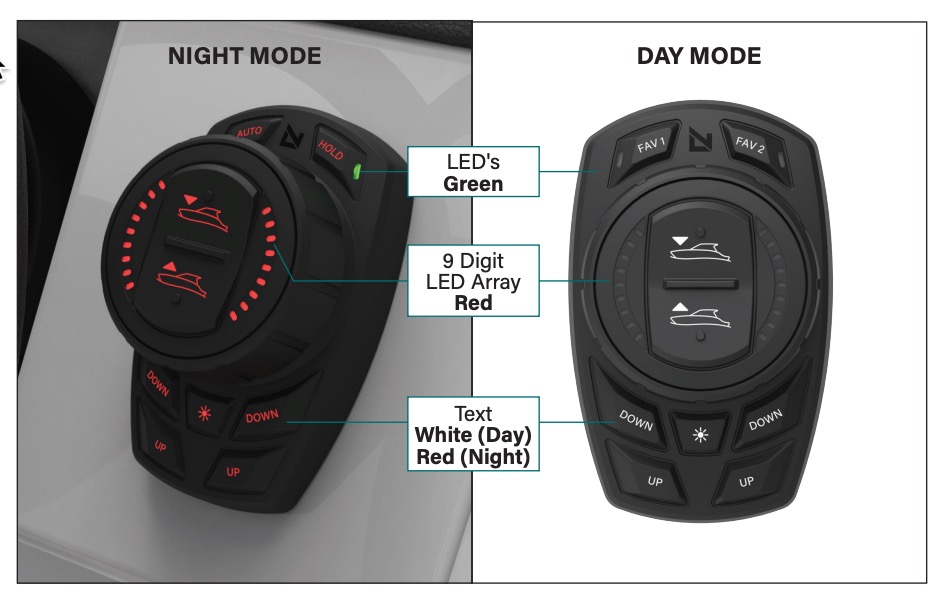
At launch, the helm mounted controller is the only interface for Pro Control. Lenco plans to offer deeper MFD based integrations starting with a side bar interface on Navico MFDs. I’m hoping they will also offer integrations for Furuno, Garmin, and Raymarine MFDs as well.
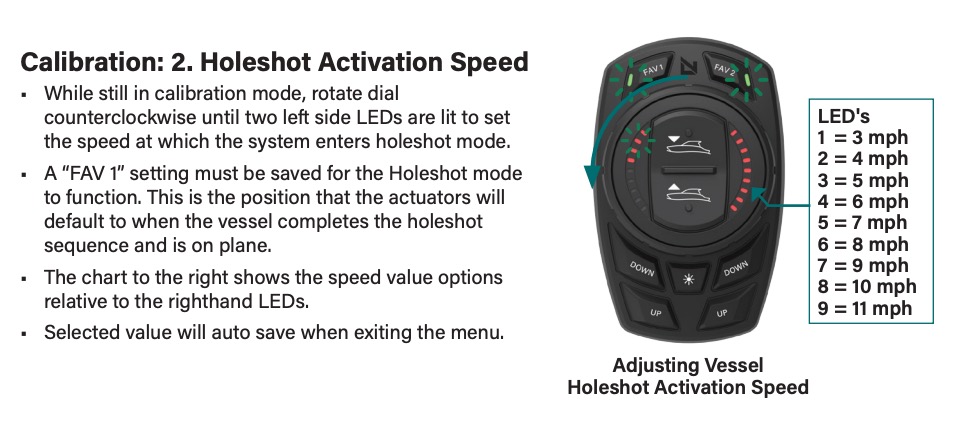
Individual settings are adjusted by entering either the commissioning or calibration menus. Menus are accessed by pressing and holding button combinations. The process isn’t bad, but unless you have the recall of rain man, you will need the manual in hand to know the meaning of each LED. The process isn’t bad and shouldn’t need to be repeated after initial tuning. However, compared to either Zipwake’s UI on their display or Seakeeper Ride’s HTML5 app, it is less intuitive.
On the water
My testing with Pro Control has shown that it does quite a few things well but leaves room for improvement, particularly in the roughest conditions. I’m going to start with the things Pro Control does well. But, before we get into that, I think it’s worth noting that your experience with any tabs or interceptors are subject to a lot of factors.
The Edgewater 280 hull likes a little tab to get on plane, but then runs flat and doesn’t call for much tabs. I often run the boat solo and the helm is off to starboard, so a little tab to lift the starboard stern quarter corrects that. I’m not an expert on trim tabs, hull design, or the marriage of the two. But, I’ve run quite a few boats and I can tell you that, even with the stock manual tab system, the hull responds smartly to tab input. On the other hand, I’ve run other similar boats that feel like they want to point at the sky with a minimum of power. So, it’s possible my experience with Pro Control has been aided by the marriage of tab selection and hull form.
There’s a lot to see in the video above. But, the basic point is that Pro Control does a very nice job launching the boat. It keeps the bow down, the boat level, and gets the boat underway smartly. In my mind, launch control systems reduce the operator’s workload. A mildly experienced operator can manage launch control without an automated system. But, it’s also a time when your hands are occupied. One hand on the wheel, one on the throttles and a thumb on the engine trim can leave you short a hand.
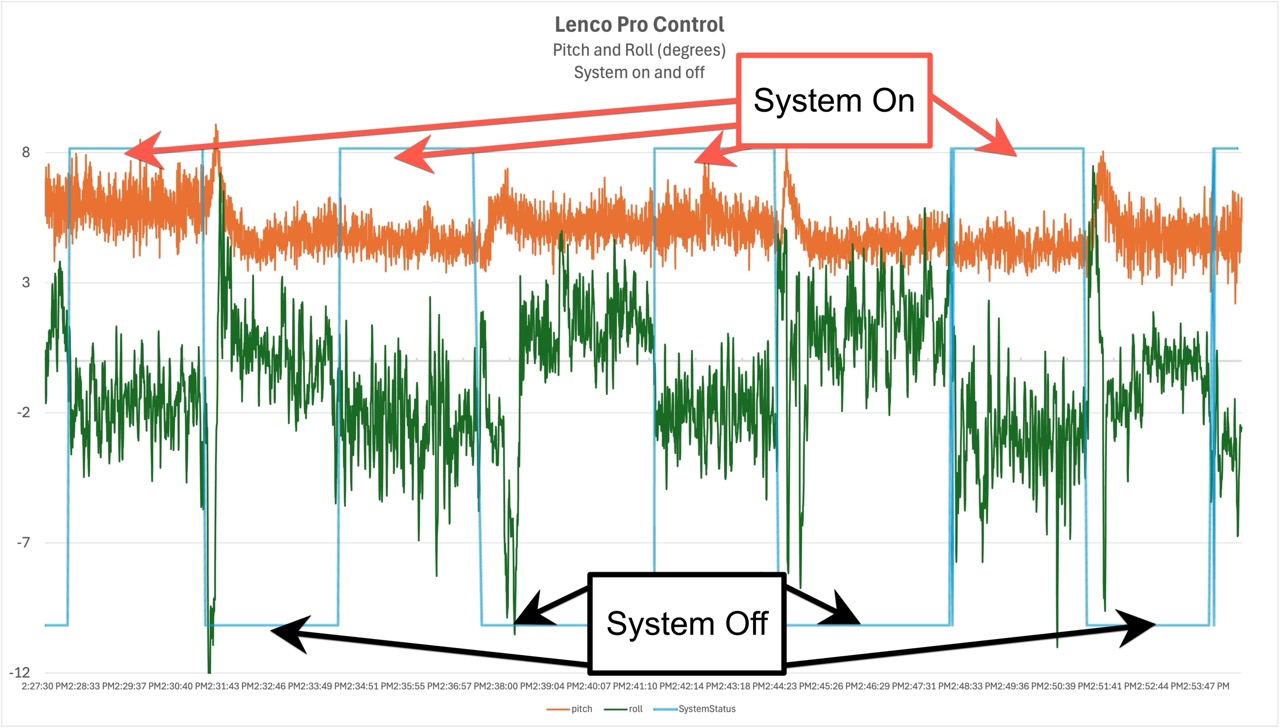
The chart above shows both pitch and roll as measured by a Garmin MSC-10 satellite compass on Panboat. Roll is depicted by the green line and pitch by the orange line. The light blue line shows if Pro Control was on or off. I think it’s pretty clear that Pro Control was effective reducing roll but made a smaller impact on pitch.
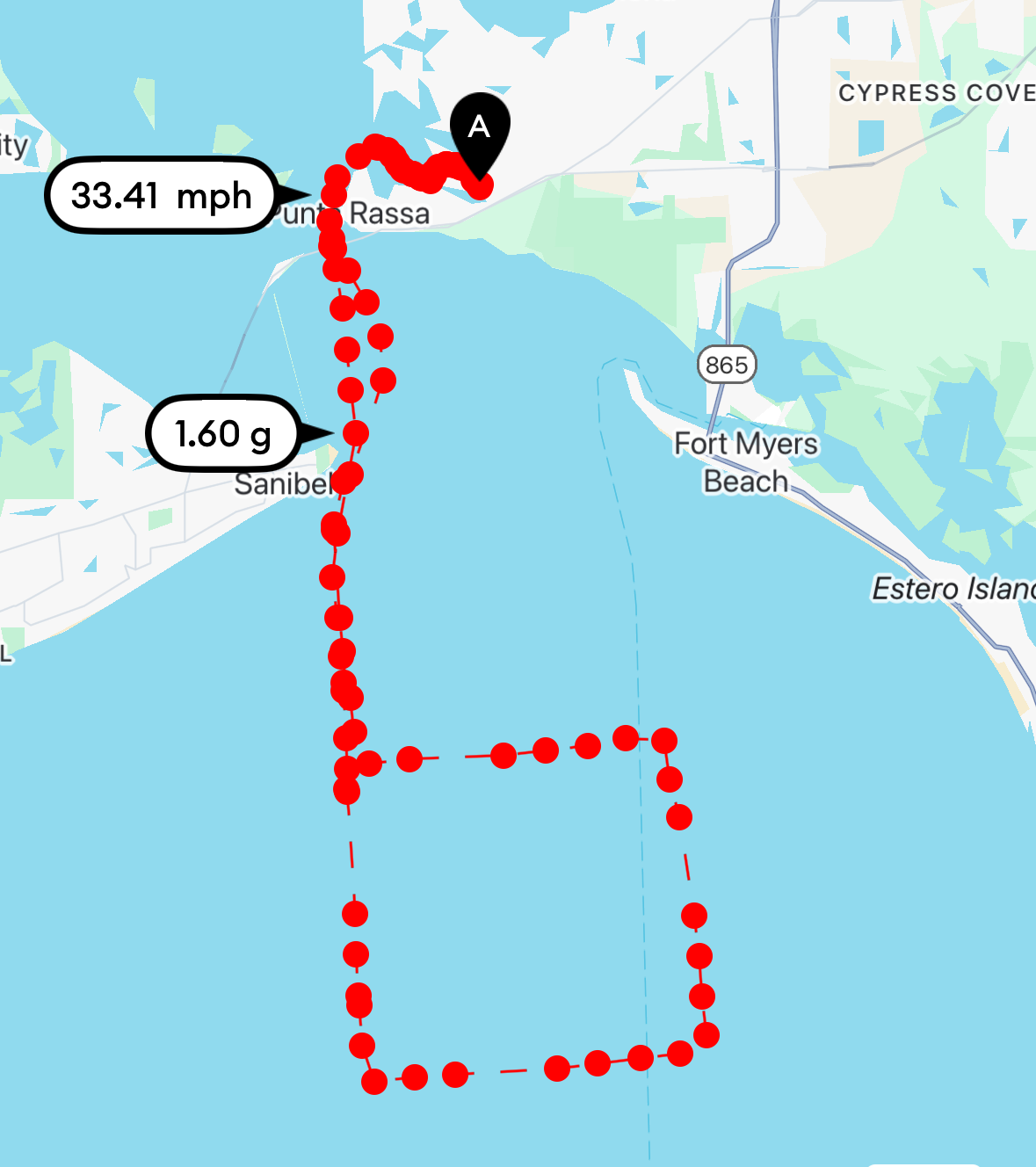
My testing consisted of three minute runs first with the system on and then with the system off. I started out with the bow into the roughly one foot seas and then turned 90 degrees to cover, head, beam, and following sea conditions. All testing was done with a speed of roughly 26 knots. The highly regular square was a bit of a surprise to me but proved I did a better job than I’d expecting holding a steady heading.
Overall, Pro Control’s corrections and inputs feel natural. There were times, when my 22-foot Cobia was equipped with Zipwake, that the motions of the boat didn’t feel right. Most of us have spent enough time on the water and enough time on specific boats to know how they should feel on the water. Zipwake sometimes imparts forces and controls that are counter to what your body and eyes expect.
In my experience, when things feel unnatural, your brain alerts you quickly. It can increase your anxiety a bit. When a boat I’m running doesn’t feel right, I start looking around, making sure it hasn’t taken on water, lost propulsion etc. Pro Control really never triggered those concerns.
Yaw
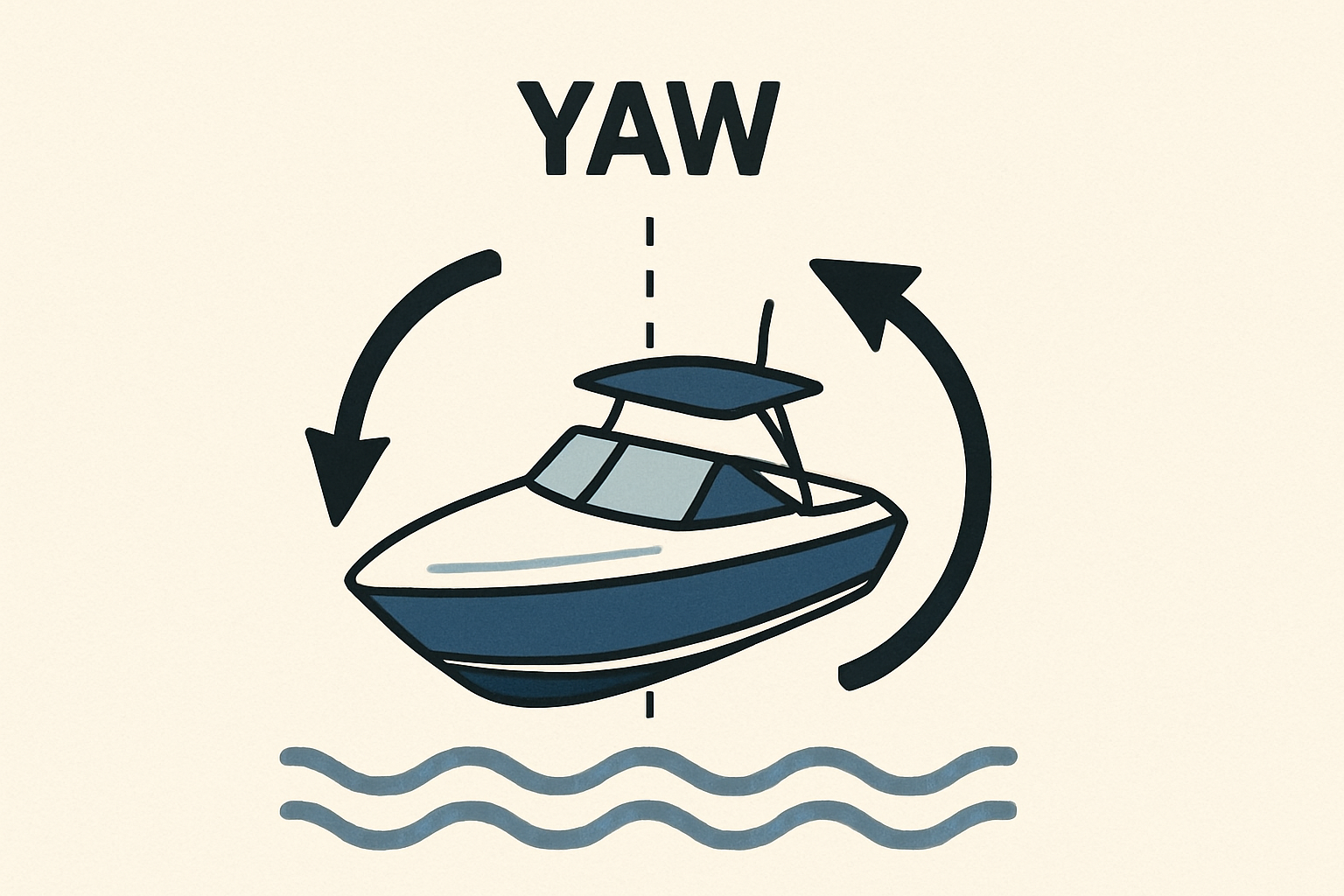
On a boat, yaw is the twisting motion around of the boat around a vertical axis. The graphic above tries to illustrate the concept. Trim tabs can easily induce yaw in the process of correcting asymmetric forces, especially list and roll. Manually controlled trim tab systems experience the same phenomenon, but because the operator is initiating the correction, it quickly becomes second nature to dial in some counter steer. When those same corrections are made automatically, the operator doesn’t have fore knowledge of the correction and is left to react. The impact isn’t terrible and just keeps you on your feet a bit. Additionally, the larger the roll or list, the stronger the yaw impact.
Rough water testing
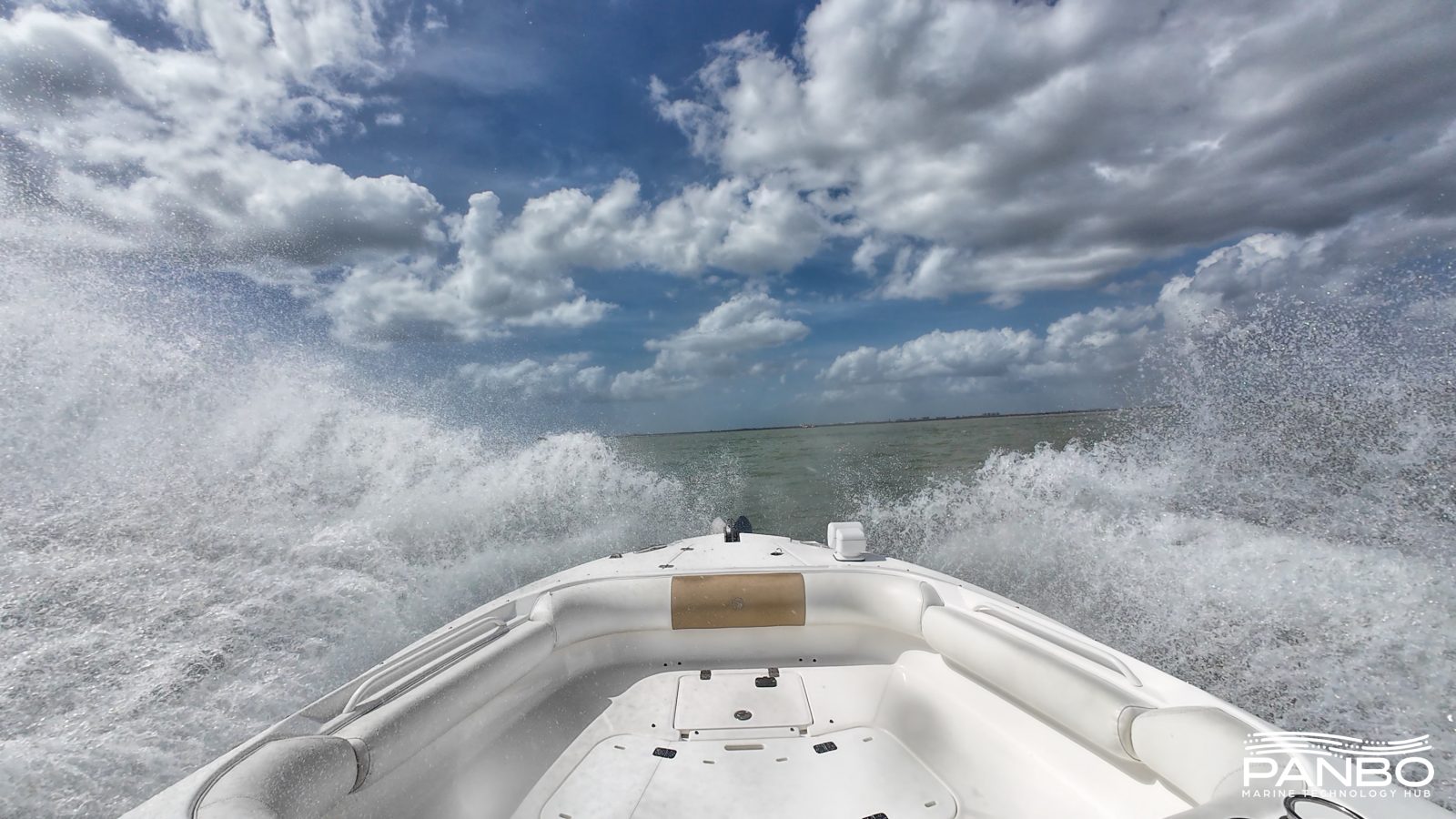
Most of my time testing on the water is pretty pleasant, but not all of it! In order to see how the system does in rougher conditions, I waited for the water forecast to get a little rougher and then headed out for some pounding. My testing thus far showed that Pro Control does a nice job in moderate conditions of leveling out the boat, holding a pitch, and launch control. But, what would the system do in rougher conditions? Unfortunately, my testing showed some problematic results. In beam, following, and stern-quartering seas the system help up well. It helped to stabilize the boat and delivered a more pleasant ride. But in head or bow-quartering seas, the system would take a few hard hits and then drop out of automatic mode.
When the system exited automatic mode, it left the tabs in their current position. Twice the position had one tab mostly deployed and the other retracted. That lead to an unfortunate running angle that had me scrambling to find the controller and retract the tabs. In consultation with Lenco, it was determined that the inertial measuring unit’s (IMU) initial placement was problematic. When Lenco came to do the initial install, they installed the IMU under the floor at the centerline of the boat at the operator’s feet. So, they moved the IMU to the inside of the transom as far aft and low in the boat as possible.
We then headed out again for some more rough water testing. The water was kind enough to offer plenty of ground well and wind driven chop in which to test. Based on my seat of the pants measurement, it seemed that even in challenging conditions, the system did an acceptable job of controlling both pitch and roll. However, in the most challenging of conditions, I felt Pro Control was overmatched by the sea state. For example, in large beam waves, the system wasn’t able to respond fast enough to correct for those waves.
Additionally, in contrast to my experience on Seakeeper Ride equipped boats, including my own 22-foot Cobia 220CC, Pro Control doesn’t feel like it has much impact on the slamming forces often associated with elevated sea states at speed. In fairness, although Ride does an impressive job knocking down impacts, the sea state for my rough water testing would have lead to some slamming on a Ride equipped boat as well.
Final thoughts
At the beginning of this article, I promised some comparison thoughts between Lenco’s Pro Control, Seakeeper Ride, and Zipwake. First, a plug for an upcoming article I’m planning to offer in depth comparisons between the three systems. I’ve spent quite a few days on the water with both Seakeeper and Lenco. I’m excited to crunch the numbers and show you what I’ve learned.
In the mean time, I’ll leave you with these thoughts. Overall, I like Pro Control and the way it feels on the boat. It has done very well on my Edgewater 280, but I think some of that is hull design. I also think that of the three systems discussed, it probably has the lowest ceiling in terms of its abilities. Fortunately, it is also the least expensive system to both buy and install.
I think there are plenty of use cases for which a boat owner would be quite happy with Pro Control. Until I really started digging into performance numbers harder, and heading out in worse conditions, I hadn’t found too many of Pro Control’s limits. In fact, if you’re a fair weather boater, as I am most of the time, Pro Control may be a great fit. If, on the other hand, your typical boating day is heading 50 miles offshore to the fishing grounds, weather be damned, Pro Control might not be the best fit.
One final thought, I don’t think Lenco is done improving Pro Control. I expect new capabilities, algorithm refinements, and hardware improvements to enhance its capabilities.


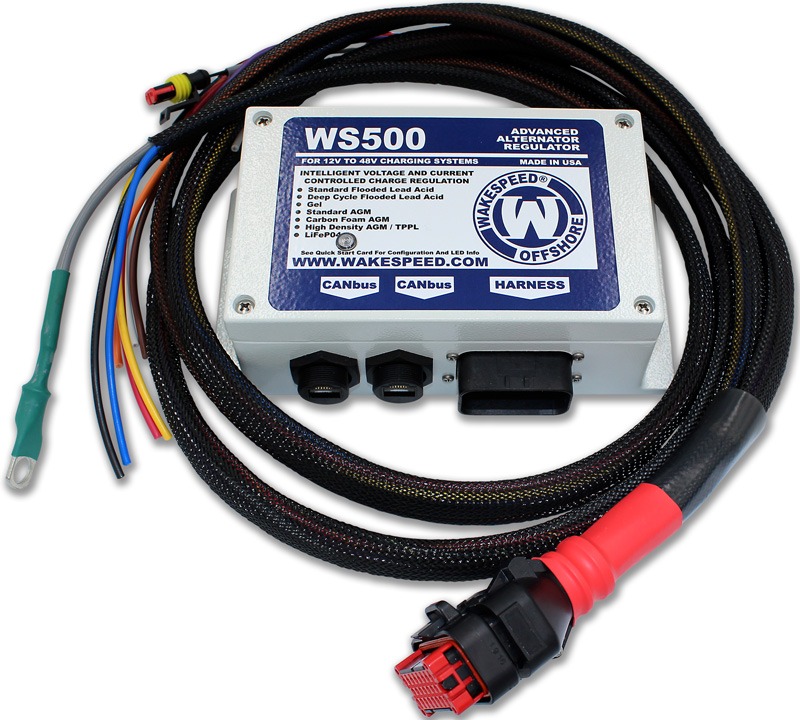
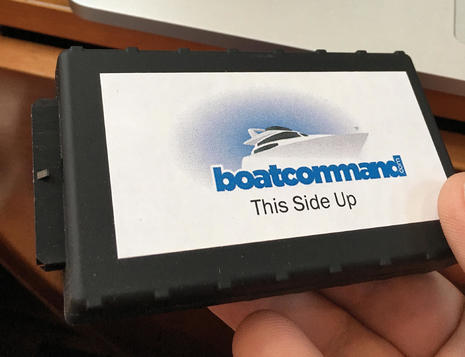
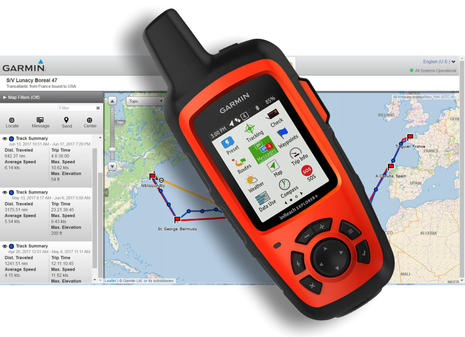
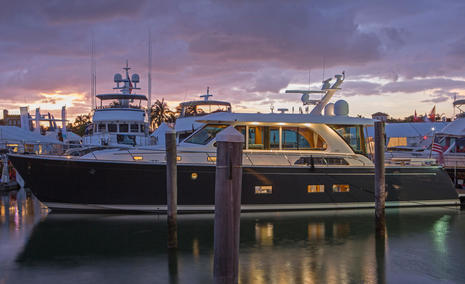







Hi Ben, if you drop the unnecessary “device” you’d have PARC or even PaRC, an easy to remember and pronounce acronym. Lenco PaRC system, etc.
It happens I’ve been thinking a lot about acronyms that work versus ones that don’t.
If you were in Camden, Maine, you would know that I am on the board of MRK fighting STDF — though some drop the F because three-letter acronyms work and STD already has appropriate connotations — about work done by MRCAC, an acronym that no one can say in a reliable way.
Buttons and signs everywhere in a highly emotional and sometimes MAGA toned small town debate over an old useless dam!
I even had to lobby my own team to style our URL like this:
http://www.MegunticookRiverKeepers.org
A good acronym is a good thing.